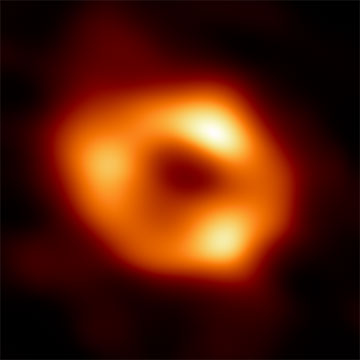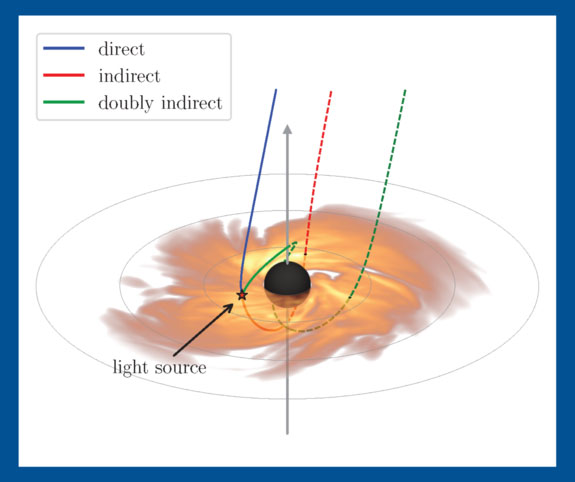
Simulations based on the supermassive black hole at the center of the M87 galaxy, as imaged here by the Event Horizon Telescope in 2019, suggest that a new echo-detection technique could provide reliable estimates of a black hole's fundamental properties. [Image: EHT Collaboration]
Astrophysicists in the United States have devised a way to detect and analyze the faint echoes of light that are produced through the gravitational effects of black holes (Astrophys. J. Lett., doi: 10.3847/2041-8213/ad8650). The new technique, which is reportedly able to determine the time delay between the direct light emission and the first echo, offers an independent method for estimating the mass and spin of the mysterious cosmic objects.
Gravitational lensing
The light echoes are the result of gravitational lensing, in which the massive presence of a black hole causes light to bend around it. Photons emitted by the same light source but moving in different directions are impacted in different ways: Some might follow a direct route from the source to the observer, while others circle the black hole one or more times before traveling toward Earth.
This behavior creates a characteristic echo signature in which the time delay between successive echoes depends in large part on the mass of the black hole, and to a lesser extent on its angular momentum and inclination relative to the observer. “That light circles around black holes, causing echoes, has been theorized for years, but such echoes have not yet been measured,” says lead author George N. Wong, Princeton University.
After a flash of light near a black hole, some rays travel straight to the observer, while others make one or more loops around the black hole first. The ones that travel in a loop look like they are coming toward Earth from a slightly different part of the sky. [Image: George N. Wong, et al.]
Measuring echoing light
The problem is that the faintness of the echoes makes them difficult to detect in the total light curve, which measures the variation in light intensity over time. To overcome that obstacle, the researchers propose a technique that exploits the capabilities of the Event Horizon Telescope (EHT) to capture interferometric data at different distances between receiver pairs. They argue that time-series data captured at short baselines isolate the light curve for direct emission, while long-baseline signals can be used to infer the light curve for the first-order echo produced by photons circling the black hole a single time.
To test the viability of their approach, the researchers created high-resolution simulations of light traveling around a supermassive black hole, similar to the one at the center of the M87 galaxy that was imaged by the EHT in 2019. By correlating the total light curve with the interferometric signals at longer baselines, they found an echo signature in the model data that is consistent with the time delay predicted by general relativity.
Although the results are promising, the simulations also show that detecting these echo signatures in observational data requires baselines longer than those currently provided by the EHT's network of receivers. Fortunately, plans are in progress to augment the EHT with a space-based radio telescope, which would enable echo detection with sufficient fidelity to provide reliable estimates of the mass and spin of black holes.

